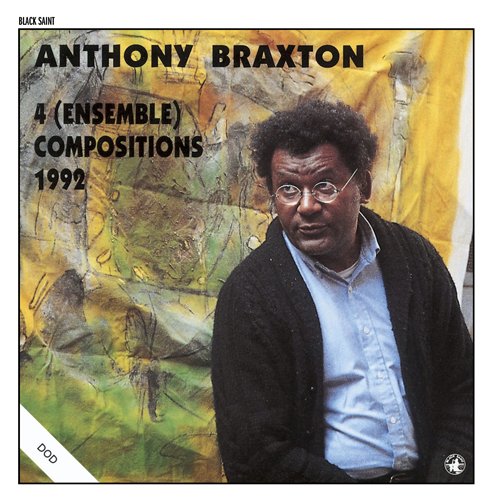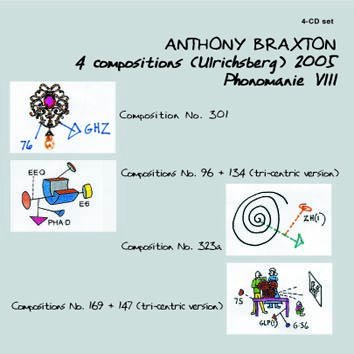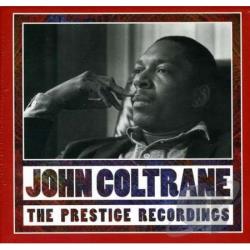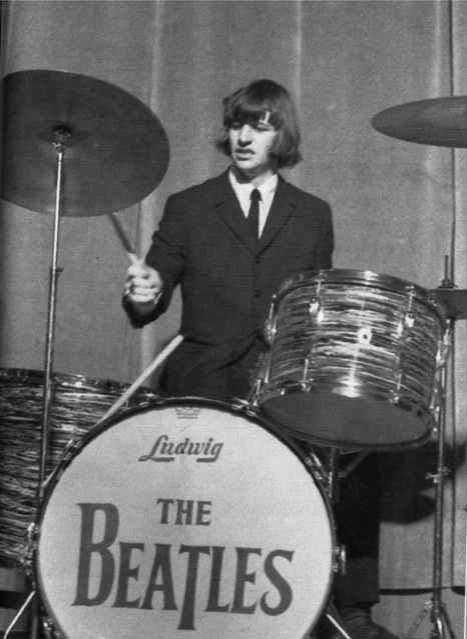Yes, there really is a street called King Braxton Court, and it's out here in good ol' Virginny. I think it's an appropriate way to honor Mr. Braxton while I ramble on about one of his greatest compositions/concepts: Composition 96.
I recently revisited Graham Lock's
Forces in Motion. Besides being the definitive book on Anthony Braxton,
Forces is one of my favorite books about music, period. It's a combination biography/extended interview/philosophy/jazz criticism/bird's-eye-view of the Braxton quartet's 1985 British tour. The Braxton quartet--Braxton on reeds, Marilyn Crispell on piano, Mark Dresser on bass, and Gerry Hemingway on drums--was one of
the great jazz quartets, redefining and extending the kind of music a group with that classic lineup can achieve. The quartet really blossomed on this tour (as is evident on the three Leo double-disc sets from it, as well as on numerous audience recordings), and they were simply killer on an extended 1993 stay at the Knitting Factory, but for me their high point (and one of the all-time pinnacles of recorded jazz) is the four-CD set
Willisau (Quartet) 1991, two discs of live performances and two discs of studio recordings.
On rereading
Forces in Motion, I went back and listened to the 1985 recordings and was blown away all over again by the force and power of the quartet. One of the things that struck me again was how much Braxton was already beginning to use earlier compositions of his both as bridges in between specified pieces and as building blocks for improvisations (a technique that in many ways would reach its culmination in Braxton's Accelerated Ghost Trance Music 21 years later). For example, Hemingway and Dresser will be playing a pulse track from one composition while Crispell could be playing the piano parts (or, indeed, other parts) of a totally different composition, all in the context of either yet another composition or an improvisation. Or Braxton will be playing part of a compositon underneath a Crispell solo appearing in a different composition. It became clear to me after reading Lock's detailed analyses of these shows that what I thought was improvisation could very well have been composition. And that without deep knowledge of Braxton's oeuvre, how can you tell? And that I have basically only scratched the surface of what is going on in this music. Do I need to know all of the sources in order to fully appreciate a piece? And how the hell can anyone tell?
One of the compositions that is used in this manner throughout 1985 is Composition 96--it's all over the place, either as a main connecting thread, or an accompanying thread not necessarily played by everyone at once. It's used a lot on
Wilisau as well. I naively thought that if I could come to grips with Composition 96 enough to be able to recognize or identify it, that I could have a better understanding of the fabric of these amazing sound sculptures. I set out to do some research on the piece, starting with Lock's comments on it.
 Composition 96
Composition 96
From Braxton's
Composition Notes Vol. E (as quoted in Lock), Composition 96 is
240 [!] pages of notated music for orchestra, four slide projectors and slides to be performed in a ceremonial concert context for positive transformation and historical re-solidification. (Forces, p. 358)
The best single place to learn about the composition is Lock's liner notes for the Leo CD
Composition 96, the only official release of the entire piece, recorded in 1981 (I'll talk about some other versions below). Lock's notes are typically enlightening and very informative. He tackles the piece from seven angles: from its role as part of Braxton's ritual and ceremonial musics; from its use of symbol and numerology; from its place in the continuum of Braxton's orchestra music; as a model of "multiple line musics" ("a music of simultaneous, independent lines which eschew any kind of conventional polyphonic relationship"); in an analysis of its 16 structural segments; in other contexts; as a part of Braxton's tri-partial systems.
What got me onto this piece in the first place is its appearances in other contexts, so I am not going to try to go into detail about all these other aspects, except to say that it's an utterly fascinating slab of music. In his liner notes to
4 (Ensemble) Compositions 1992), Art Lange breaks it down quite well:
"Composition 96," a pivotal work in Braxton's output, differs as an example of orchestral "collage form," employing "multiple line musics" (or unrelated phrases played simultaneously by individual multiple voices) as well as sectional combinations. That the multiple lines can be separated from this context and used independently elsewhere within Braxton's music is exhibited by their appearance in other recorded performances for orchestra (the London Jazz Composers Orchestra on Intakt), septet (at Victoriaville, on Victo), and quartet (at Willisau, on hat Art). First recorded (on Leo records) in a 55-minute orchestral performance, "Composition 96" is here heard in a new version with drastically reduced forces and excerpting from the full score. The simultaneous layers of activity do not cause, as one might expect, a confusion of concerns, but instead a complex organization of relationships, heard from a different timbral and textural perspective.
In addition to the pieces Lange mentions, Composition 96 makes appearances in all three of the double-disc Leo sets from the 1985 quartet tour (London, Birmingham, and Coventry), on three pieces from
Five Compositions (Quartet) 1986, and many, many other recordings listed
here. There's also a bootleg recording of the full composition from 1995.
Mike Heffley, in his in-depth analysis on Braxton (
The Music of Anthony Braxton), says that Braxton specifies [in his
Composition Notes E, pp. 26-90]
the increase of "collage improvisation"--his version of the collective jam, in which each player improvised on different platforms form the others--as being a musical reflection of a real-world phenomenon that engaged him most deeply as both composer and human being. 96 was a major move into notated music suggested by such multiimprovisations. (Heffley, p. 397)
Heffley goes into great detail about how this composition works, and is well worth reading. He concludes by writing about
the way parts of 96 are used so much in quartet contexts, where they function as particularly life-giving parts of a collage: they function well as both stimuli and contrast to other pieces (as on Willisau and Five Compositions), transitions from one space to another (as on London), one voice in a conversation (as on Birmingham), and the primary territory (London), all because 96 captures the very essence of Braxton's mind at work and at rest, and in the context of the radiant heights of his own spirituality and creative vision. (p. 401)
Lock quotes Braxton as saying
96 is the primary source pool for the collage approach (
Forces, p. 401). So, clearly, Composition 96 is a key to digging deeper into the quartet music if nothing else.
In many of Braxton's compositions of this period, improvisation is integrated with the fabric of the performance via forms of graphic notation including use of color, shapes, and symbols. See Lock's 2008
article "'What I Call a Sound': Anthony Braxton’s Synaesthetic Ideal and Notations for Improvisers" for an exploration of these methods. But Composition 96 has both a written component and a visual component: there is a score for orchestra, written in traditional notation (240 pages of it!), and a score for a photographer to use four slide projectors to show examples in nature of a set of specified religious symbols. Having never seen a live performance of it, I cannot speak to how the visual aspect works, although it's fun to contemplate.
I decided to set myself the task to try to become familiar enough with the composition that I could recognize it when it's used in other contexts. I thought this would enrich my understanding of the quartet music.
So, I have listened fairly closely to most of the versions of Composition 96 that are out there:
1.
Composition 96: the 1981 Leo recording, the only "complete" version, which includes all seven parts: "four primary structural areas separated by three improvised
fermata interludes" (Lock liner notes).

The four primary areas are, as far as I can tell, conventionally notated. Each primary area is further divided into four structural segments, for a total of 16. The
fermata interludes are easy to identify: they appear at regular intervals, and they consist of one long sound, lines or chords, played by the reed and string instruments, varying in volume level. The "written" areas are all over the place: abstract
bursts of dynamic sound energy conveyed through multiple lines of melody and timbre intersecting and colliding. As Lock puts it:
So what we have are four basic phrase grouping line continuums [written for reeds, brass, strings, harp, and percussion], their contours shifting through the 16 structural segments as various combinations of language strategies come into play--which combinations are treated differently by, and within, each instrumental section. Add to these the four-note chord voicings ... (which also run through all the intra- and inter-section possibilities), plus constantly fluctuating rhythmic pulses for each line continuum, and the complex, kaleidoscopic nature of Composition 96 begins to take shape. (liner notes)
It's an amazing listen: 55 minutes of life-affirming, atonal, invigorating large-ensemble music, conducted by Braxton. The interludes allow you to catch your breath, so to speak, between the turbulence of the primary areas. Musical ideas are flung all over the place, yet it hangs together cohesively. But there are so many abstract melodic lines that my feeble mind can't comprehend how I will ever be familiar enough with them to recognize them in other contexts. That may be a key part of its charm: it always sounds fresh and inventive.
2.
4 (Ensemble) Compositions 1992:

Scaled down to 10 minutes, and again conducted by Braxton, the excerpts from the full piece here move along at a brisk pace. This version lacks the
fermata interludes, which changes the character of the piece as a whole, and if you're familiar with the longer piece, the anticipation of the interludes creates an extra tension that is never relieved until the very end. But that's okay, since the whole thing moves by so quickly. The prominent presence of two accordions in the orchestral mix adds a different color to the piece as well.
3.
1995-02-09 Tri-Centric Festival, The Kitchen, NYC (bootleg recording): This version is incomplete at 41 minutes, but it does contain all three interludes. It's a very spirited and exciting performance. Two things quickly became apparent to me upon listening: First, no matter how familiar I am with the original version, I'll never be able to match up any corresponding musical lines here. And second, in spite of that, the composition retains its identity, even before we reach the first interlude. It all sounds strangely familiar yet alien and fresh.
4.
4 Compositions (Ulrichsberg) 2005/Phonomanie VIII:

For this recording, Composition 96 is combined with Composition 134, and is played by an ensemble about a quarter of the size of the one on the 1981 version. The other difference is that Braxton actually plays in addition to conducting. Not surprisingly, the piece still retains its identity. And once again, it's almost impossible for me to pick out phrases or lines that also appear in the earlier versions. And one other thing: I'm not sure I can even tell when 96 ends and 134 starts, if indeed it's even that simple. For all I know they could have been playing both pieces simultaneously from the beginning. That's how unsure I am of my understanding of this music (which, buy the way, sounds incredible). There are certainly parts that I can point to and say with some certainty that it's not 96. But that's about as far as it goes. I don't hear the interludes, and certainly by the middle of the piece there is definite improvising going on (with some great extended soloing by Braxton). 134 may start at 13:44, but then again that sounds as much like a later ghost trance line as it does anything else; my sole experience with 134 is from
Eugene (1989) and this doesn't really sound like that. Who knows?
And this brings me to my conclusion: I am evidently a limited (but still friendly!) listener. It's hard to pick out lines from Composition 96 even when it's rather starkly presented like this, much less when it's buried in or alluded to in lengthy quartet improvisations. After listening to these four pieces repeatedly, I went back to the quartet pieces that supposedly use it in the manner described above, and I basically just have to take Braxton's (and Lock's ) word for it. Lock says of Composition 96 that "if it is 'about' anything, [96] is about exploring the potentialities of form, on both the structural and the vibrational level" (liner notes). Okay, I get that, I think, but that's about as far as it goes! How silly of me to think I could even begin to parse out this music in such a way. How can the listener even tell when or if Composition 96 is being quoted or used? More to the point, does it matter? Although frankly, improvisation is so fused into Braxton's compositional philosophy (well documented by Lock and Heffley) that you just have to go by what you're told. So for all those quartet pieces that include "+96" in the title, there's no way for me to really tell when it's showing up. And am I just colossally missing the point here? Does it really matter whether or not I recognize parts of 96 in quartet performances?
It's all rather mundane, but for me it boils down to the fact that this is just great music, and I have to accept my limitations and enjoy what I'm hearing. I'm okay with that. Composition 96, in whatever form, has proven to be quite enriching and invigorating for me--even when I don't know that I am listening to it.















